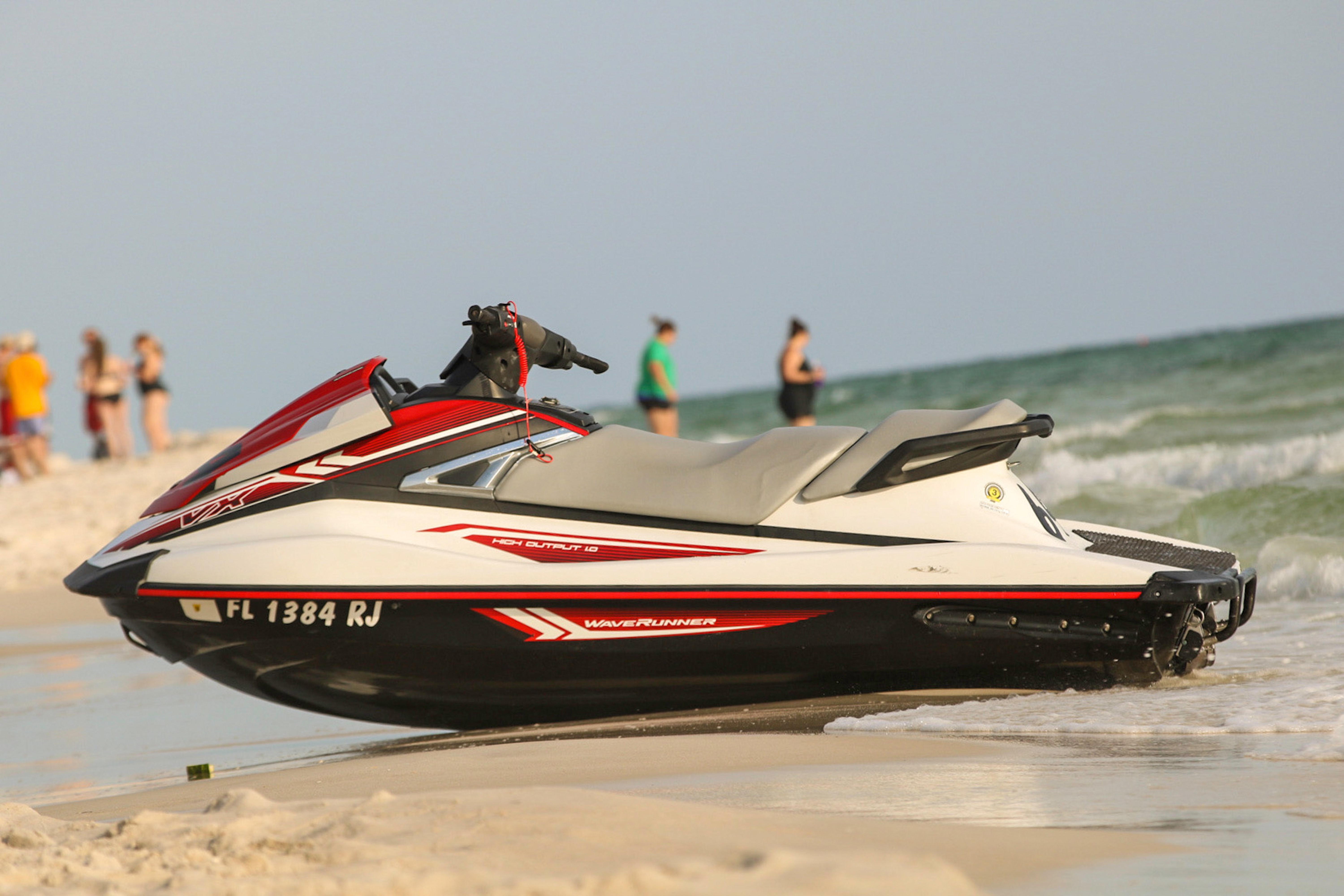If you’re located in a colder climate, it’s time to start thinking about storing your PWC/jet ski for the winter.
» MORE: PWC/ Jet Ski Insurance
Taking the time to carefully winterize your watercraft is critical to ensuring all systems perform to their capabilities the following season. Failure to perform preventative maintenance throughout the year can have costly consequences like battery failure, backed-up fuel systems, and damage to other internal parts, and more.
It’s important to follow a few simple, yet imperative steps to winterize watercraft before the temperature dips below freezing. The owner’s manual should be your go-to resource. It will provide detailed instructions that are specific to the make and model.
For a quick overview on how to winterize a jet ski/PWC, check out the steps below.
1. Empty all gear
To prepare for winterization, it’s important to first remove any towels, gear, or other items from the storage compartments. You can also take this opportunity to thoroughly wipe down these areas, making sure they are both clean and dry.
Consider leaving the storage compartments slightly cracked open to prevent moisture from accumulating, which can lead to mold and mildew buildup. But do not leave them fully open. Animals and insects may then nest inside over the winter.
2. Clean jet pump
Next, rinse the jet pump with soap and water to remove leftover debris and apply a coat of lubricant to avoid corrosion. Additionally, inspect the jet pump intake and outlet. Look for cracks and other clear signs of excessive wear. If you notice any damage, consider fixing or replacing it. You should also remove the impeller cover to verify no water collection has occurred.
3. Use anti-freeze
If you live in an area where temperatures tend to reach below freezing, it’s very important to run antifreeze through the system. This will prevent any leftover moisture from expanding and damaging its surroundings.
Start by mixing the antifreeze with water in a bucket. Then place a hose or water pump in the flush outlet and the mixture on the opposite end. Continue to turn the engine on and off until the solution has completely passed through the exhaust system.
4. Stabilize the fuel system
This next step will ensure your fuel and fuel system remain in good condition throughout the winter. It’s important to store a PWC with a full tank to prevent condensation on any exposed surface within the fuel system. Add a quality fuel stabilizer and run the engine at 30-second internals to ensure it mixes into the fuel. This will reduce the risk of fuel breaking down.
This is also an ideal time to check the fuel delivery system for leaks. If you see or smell fuel, this will indicate a leak. It should be properly repaired or replaced before heading into long-term storage.
5. Lubricate cables and seals
Coat all cables, seals, and exposed parts with a lubricant and protectant that is recommended by the manufacturer of the PWC. Lubricant will help to prevent the corrosion of areas that were accidentally left vulnerable to water during storage.
6. Spray fogging oil
Apply fogging oil to the carburetor and spark plugs. This is another tactic to avoid corrosion and water damage.
Start by removing the air filter and spray the carburetor and spark plug cylinders with fogging oil. It’s best to do this while the engine is idling and waiting until it stalls. Next, remove the spark plugs and spray fogging oil into each hole for a few seconds.
Place a clean rag over the holes and turn the craft to ensure the oil coats all internal parts. Keep in mind - the engine probably will not start at this point. That’s perfectly normal. Also take this opportunity to check the spark plugs and note if any need replacing before next season.
» MORE: A Guide to Winterization
7. Remove the battery
It’s now time to remove the battery and store it safely. Otherwise, it would likely drain over time.
Start by disconnecting the negative terminal and then the positive terminal. Then store them both in a spot that won’t get below freezing. Keep in mind - you should never store a battery directly on concrete. It should be placed on a different type of surface.
8. Cover the exhaust
Bugs and critters are on the hunt for a safe and warm home during winter. Don’t let this home be the exhaust of your PWC.
You can cover it up with plenty of materials - including sheets of galvanized metal (the same material used to install flashing along a chimney). This will provide a physical barrier to prevent critters from creeping in and building nests.
9. Thoroughly clean the exterior
You will want to give the hull and body a deep cleaning before the PWC is stored for a long period. This should be done after all the mechanical maintenance is complete and before the craft is covered.
The type of cleaning products used to wash the watercraft will depend on your model and the manufacturer’s recommendation. Many products are designed to remove grime, water stains, and marine organisms from the body. But soap and water will do a good job as well.
While cleaning, you should also inspect all areas for damage that might need repair.
10. Cover and store in a secure location
No matter where you choose to store your PWC (preferably in a marine-dedicated storage facility), it should always be properly covered or shrink-wrapped. This will prevent dust and dirt from settling the cracks, as well as water buildup from rain and snow if it’s left outside.
» MORE: Boat Shrink Wrapping Tips

